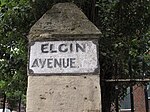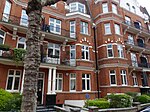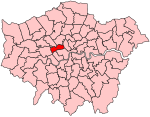Paddington Recreation Ground
Commons link is defined as the pagenameField hockey venues in EnglandHampstead & Westminster Hockey ClubMaida ValeParks and open spaces in the City of Westminster

Paddington Recreation Ground is a park in Maida Vale, City of Westminster, just north of Paddington. Its 27-acre site is the largest area of parkland located entirely within the City of Westminster. It was the first park of its kind in London, having operated since 1888. Annually, it attracts over 1.5 million users, who visit the Recreation Ground for its green-space value. The area covered by the park has "Conservation Area" status. It was selected in 1995 by the LEU as a non-statutory Site of Local Importance for Nature Conservation (SINC).: 8
Excerpt from the Wikipedia article Paddington Recreation Ground (License: CC BY-SA 3.0, Authors, Images).Paddington Recreation Ground
Grantully Road, London Maida Vale
Geographical coordinates (GPS) Address Nearby Places Show on map
Geographical coordinates (GPS)
| Latitude | Longitude |
|---|---|
| N 51.530239 ° | E -0.191394 ° |
Address
Richard Beachcroft Pavilion
Grantully Road
W9 1LW London, Maida Vale
England, United Kingdom
Open on Google Maps






